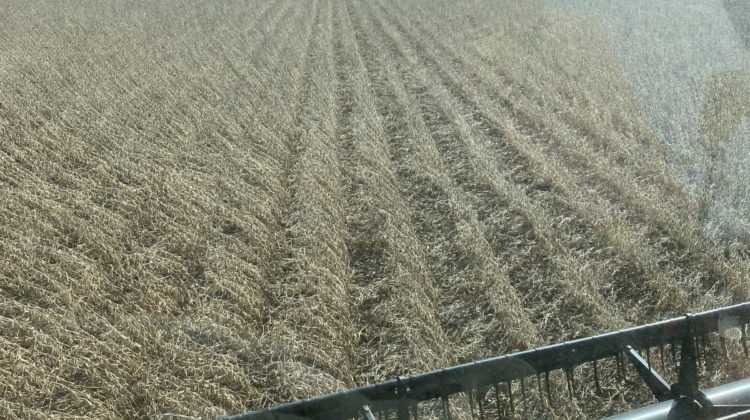
This story is part of the 2020 Harvest Value Stories Series. This series includes various real world examples of challenges growers face each harvest season. We want to show the impact that understanding harvest loss differently can have on an operations profitability and performance.
During the 2020 harvest season, the Farmwave Harvest Vision System demo version covered almost 40,000 acres. Growers experienced incredible moments firsthand. For the first time, growers saw loss from the header, providing them with the data to adjust settings in real time to reduce actual loss from their combines. In 2020, our visits to farms meant the FHVS encountered a variety of environments, terrain, and crop conditions. The variance in crop conditions we experienced were very wide. Crop conditions ranged from 9% moisture corn, showing greater than ten bushels per acre of loss, too late plant soybeans at 18% moisture showing a bushel per acre loss. Most importantly, our field-tested data allow us to build resilient, accurate, and trustworthy harvest loss AI models for real world decision making.
Harvest Details
- Crop: Soybeans
- Crop Condition: Damaged Derecho
- Grain Moisture: 16%
- Location: Northern Illinois
- Terrain: Mostly flat terrain with a few grass water runoffs
- Weather: Sunny and Clear
- Machinery: Case 7120
- Header: Case 3020
- Field Acres: 80
We arrived on-site on a crisp October morning. The soybean harvest was already underway with headlands completed and about 90% of the field remaining. The crop had been damaged laying in a northeast direction from the Derecho storms in August of 2020. As a result, field conditions were just “ok” due to the condition of the crop. We deployed our hardware and continued the back-and-forth passes. The grower’s major challenge was finding the right cutting angle to optimize the yields and efficiencies in the field due to the crop condition.
On the initial passes, we were seeing average losses of roughly 15–18 beans or about five bushels per acre. These passes were being cut into the beans (southwesterly direction), which made them fall into the header much easier. On the return passes, we were seeing about 25–30 beans per square foot, or roughly eight bushels per acre. As we were cutting from behind the beans (north westerly direction), the reel was out as far and as low as settings would allow, pulling the beans into head on these passes as best as it could.
It was decided that the only way the operator could reduce losses and maintain efficiency was to change the cutting direction to more of a perpendicular direction to the crop. This change helped to reduce and even out the losses for both passes. The losses stabilized on both passes to around 15–18 beans per square foot, or roughly five bushels, thus saving the operator about three bushels per return pass- equivalent to about 50% of the field. At today’s market price of $14.08 per bushel, it drove an estimated savings of roughly $1,700 for that field alone and a potential savings of over $12,500 over the remaining three hundred soybean acres left to harvest.
“There are always unique challenges during the harvest season but this bean damage is unlike anything I’ve seen before. The Farmwave system helped my to quantify the loss and make the necessary decision to improve the loss we were seeing” — Northern Illinois Grower
